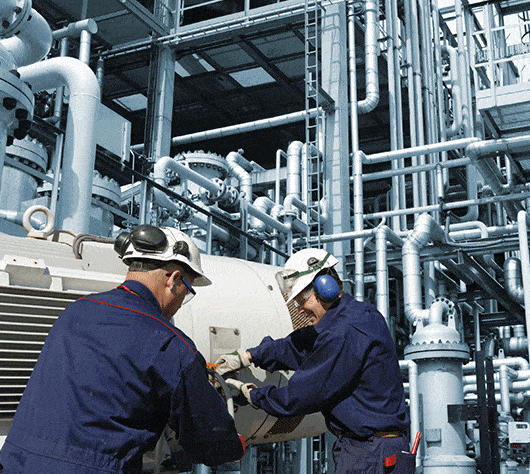Not known Details About Roar Solutions
Not known Details About Roar Solutions
Blog Article
Unknown Facts About Roar Solutions
Table of ContentsGet This Report on Roar SolutionsThings about Roar SolutionsWhat Does Roar Solutions Do?
In order to protect installments from a potential surge a method of evaluating and classifying a potentially unsafe location is called for. The objective of this is to ensure the correct choice and installation of tools to eventually prevent a surge and to make sure safety of life.
(https://www.bitchute.com/channel/JJyNq2gAk2M7)
No tools ought to be set up where the surface area temperature level of the equipment is more than the ignition temperature level of the offered threat. Below are some typical dust harmful and their minimal ignition temperature level. Coal Dust 380C 225C Polythene 420C (thaws) Methyl Cellulose 420C 320C Starch 460C 435C Flour 490C 340C Sugar 490C 460C Grain Dirt 510C 300C Phenolic Material 530C > 450C Aluminium 590C > 450C PVC 700C > 450C Residue 810C 570C The probability of the risk existing in a focus high adequate to trigger an ignition will vary from area to location.
In order to classify this danger an installment is divided right into areas of risk depending upon the quantity of time the dangerous exists. These areas are described as Areas. For gases and vapours and dirts and fibers there are 3 zones. Zone 0 Area 20 A dangerous atmosphere is highly likely to be existing and might exist for lengthy periods of time (> 1000 hours each year) or perhaps constantly Zone 1 Area 21 A hazardous atmosphere is feasible yet unlikely to be present for lengthy durations of time (> 10 450 C [842 F] A classification of T6 suggests the minimal ignition temperature level is > 85 C [185 F] Unsafe area electrical equipment possibly created for usage in greater ambient temperature levels. This would certainly indicated on the ranking plate e.g. EExe II C T3 Ta + 60C( This means at 60C ambient T3 will not be exceeded) T1 T1, T2, T3, T4, T5, T6 T2 T2, T3, T4, T5, T6 T3 T3, T4, T5, T6 T4 T4, T5, T6 T5 T5, T6 T6 T6 A T Class score of T1 means the maximum surface area temperature level created by the instrument at 40 C is 450 C. Assuming the associated T Class and Temperature ranking for the devices are proper for the area, you can always utilize a tool with an extra strict Division score than needed for the location. There isn't a clear solution to this inquiry unfortunately. It actually does rely on the sort of equipment and what repair services require to be accomplished. Equipment with details test treatments that can not be performed in the field in order to achieve/maintain 3rd party rating. Must return to the manufacturing facility if it is before the equipment's service. Field Repair Service By Authorised Employee: Difficult testing might not be needed nonetheless specific procedures might need to be followed in order for the equipment to preserve its third event ranking. Authorized employees must be employed to carry out the job correctly Repair need to be a like for like substitute. New component must be considered as a straight substitute needing no unique screening of the equipment after the repair work is total. Each tool with a dangerous rating should be reviewed separately. These are outlined at a high level listed below, but for more thorough details, please refer straight to the guidelines.
The Facts About Roar Solutions Revealed
The equipment register is a detailed data source of tools documents that includes a minimum collection of fields to recognize each item's place, technical specifications, Ex lover category, age, and environmental data. This details is important for monitoring and taking care of the tools effectively within hazardous locations. In comparison, for regular or RBI sampling inspections, the quality will be a combination of Comprehensive and Close evaluations. The proportion of Detailed to Close examinations will certainly be determined by the Equipment Risk, which is analyzed based upon ignition risk (the chance of a resource of ignition versus the chance of a flammable ambience )and the dangerous area classification
( Zone 0, 1, or 2). This variation will certainly additionally affect the resourcing demands for job prep work. Once Lots are defined, you can develop tasting plans based upon the example size of each Lot, which refers to the variety of arbitrary devices things to be examined. To establish the called for example size, 2 elements require to be assessed: the dimension of the Whole lot and the classification of examination, which suggests the level of initiative that must be used( decreased, typical, or enhanced )to the inspection of the Whole lot. By incorporating the category of evaluation with the Great deal size, you can then develop the ideal denial requirements for a sample, suggesting the allowed number of defective products found within that sample. For more details on this process, please describe the Power Institute Guidelines. The IEC 60079 conventional recommends that the optimum interval between examinations ought to not exceed 3 years. EEHA inspections will also be performed beyond RBI campaigns as component of set up upkeep and devices overhauls or repair work. These evaluations can be credited toward the RBI example sizes within the impacted Lots. EEHA inspections are conducted to determine faults in electric devices. A heavy scoring system is essential, as a solitary tool may have numerous mistakes, each with differing degrees of ignition threat. If the combined rating of both inspections is much less than two times the fault score, the Whole lot is considered acceptable. If the Great deal is still taken into consideration inappropriate, it must undergo a complete evaluation or justification, which might activate more stringent assessment protocols. Accepted Great deal: The sources of any type of faults are identified. If an usual failing mode is found, extra tools may require maintenance. Faults are categorized by severity( Safety and security, Stability, Housekeeping ), ensuring that immediate concerns are examined and dealt with immediately to minimize any kind of influence on safety and security or procedures. The EEHA database need to track and tape the lifecycle view it now of mistakes together with the corrective actions taken. Executing a robust Risk-Based Assessment( RBI )method is important for guaranteeing compliance and safety and security in handling Electrical Devices in Hazardous Areas( EEHA) (hazardous area course). Automated Mistake Rating and Lifecycle Administration: Effortlessly take care of faults and track their lifecycle to boost inspection accuracy. The intro of this support for risk-based evaluation further enhances Inspectivity's placement as a best-in-class service for governing compliance, along with for any kind of asset-centric examination use case. If you have an interest in discovering more, we invite you to request a demo and uncover just how our solution can change your EEHA management procedures.
5 Easy Facts About Roar Solutions Shown

In regards to eruptive risk, an unsafe location is a setting in which an eruptive ambience is existing (or may be expected to be existing) in amounts that call for special preventative measures for the building, setup and use equipment. high voltage courses. In this post we explore the difficulties dealt with in the workplace, the threat control actions, and the needed competencies to work securely
These compounds can, in specific problems, create eruptive atmospheres and these can have significant and heartbreaking effects. Most of us are familiar with the fire triangular eliminate any kind of one of the 3 elements and the fire can not occur, however what does this mean in the context of dangerous areas?
In most instances, we can do little concerning the degrees of oxygen in the air, yet we can have significant impact on sources of ignition, as an example electrical equipment. Dangerous locations are recorded on the hazardous area classification drawing and are identified on-site by the triangular "EX" indication. Right here, among various other crucial details, zones are divided right into three types depending upon the threat, the possibility and period that an explosive atmosphere will exist; Area 0 or 20 is considered one of the most hazardous and Area 2 or 22 is regarded the least.
Report this page